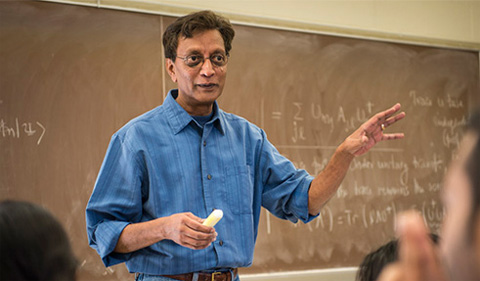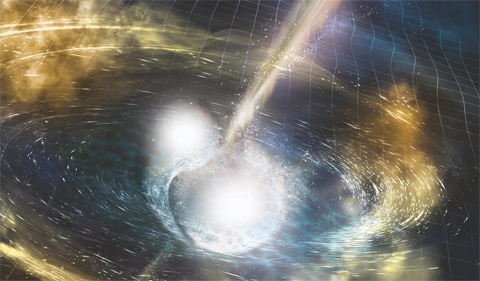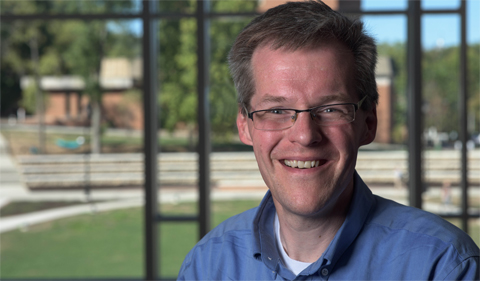Two Ohio University physicists are part of a new NSF-supported Physics Frontier Center at UC Berkeley that will focus on neutron star modeling in the “gravitational wave era.” The center brings together researchers from 13 institutions and taps capabilities at Lawrence Berkeley National Laboratory with the goal of improving understanding of the most violent events known in the universe: mergers of neutron stars and their explosive aftermath.
Drs. Madappa Prakash and Daniel Phillips, professors of Physics & Astronomy at OHIO and members of the Institute of Nuclear and Particle Physics, will participate in the Network for Neutrinos, Nuclear Astrophysics, and Symmetries (N3AS) Physics Frontier Center which was formally approved Aug. 10 and launches Sept. 1, 2020. The center builds on an NSF-funded research hub in multi-messenger nuclear astrophysics that was established in 2017 and is entering its final year. In multi-messenger astronomy, researchers gather data from a range of observatories to address longstanding questions in the field.
Just one month after the hub’s inception, there was the fortuitous first observation of gravitational waves – signatures of the warping of space-time – from the merger of neutron stars. Afterward, observatories around the world captured a series of infrared, X-ray, gamma-ray, and visible light images of the merger’s kilonova: the hot, radioactive debris produced in the merger, noted Wick Haxton, a theoretical nuclear physicist in Berkeley Lab’s Nuclear Science Division.
These observations provided the long-sought first evidence for how the universe is seeded with heavy elements such as gold, known as the r-process.
Phillips said, “Physics Frontier Centers enable transformational advances in the most promising research areas. Our inter-institutional collaboration combines expertise in microscopic models of nuclei, explosive nuclear burning, and astrophysical modeling of neutron stars and neutron-star mergers. This team will allow us to trace the imprint of particular details of the force that acts between neutrons and protons at sub-atomic distances on the dynamics of neutron-star mergers. We will refine models of these violent events as more observations of them using multiple messengers–gravitational wave, neutrino, X-ray, visible-light, etc. signals–come in over the next few years.”
The new Physics Frontier Center thus continues the hub’s theme: using the most extreme environments found in astrophysics – the Big Bang, supernovae, and neutron star and black hole mergers – as laboratories for testing fundamental physics under conditions beyond the reach of Earth-based labs.
“The newly established Network for Neutrinos, Nuclear Astrophysics, and Symmetries Physics Frontier Center will reveal new information about the physics in extreme astrophysical environments, allowing scientists to address major questions in physics and multi-messenger astrophysics,” said Jean Cottam Allen, NSF program officer overseeing the Physics Frontier Centers.
“It’s great to be a part of the PFC. It allows us continue our work with the NSF-funded research hub. Exciting things are happening in our field, and I look forward to nurturing the young scientists who will take part in and strengthen our efforts here at OU. There’s much to be done, and the broad collaboration that the PFC affords will be very useful in our efforts,’ added Prakash.




















Comments